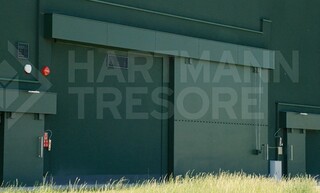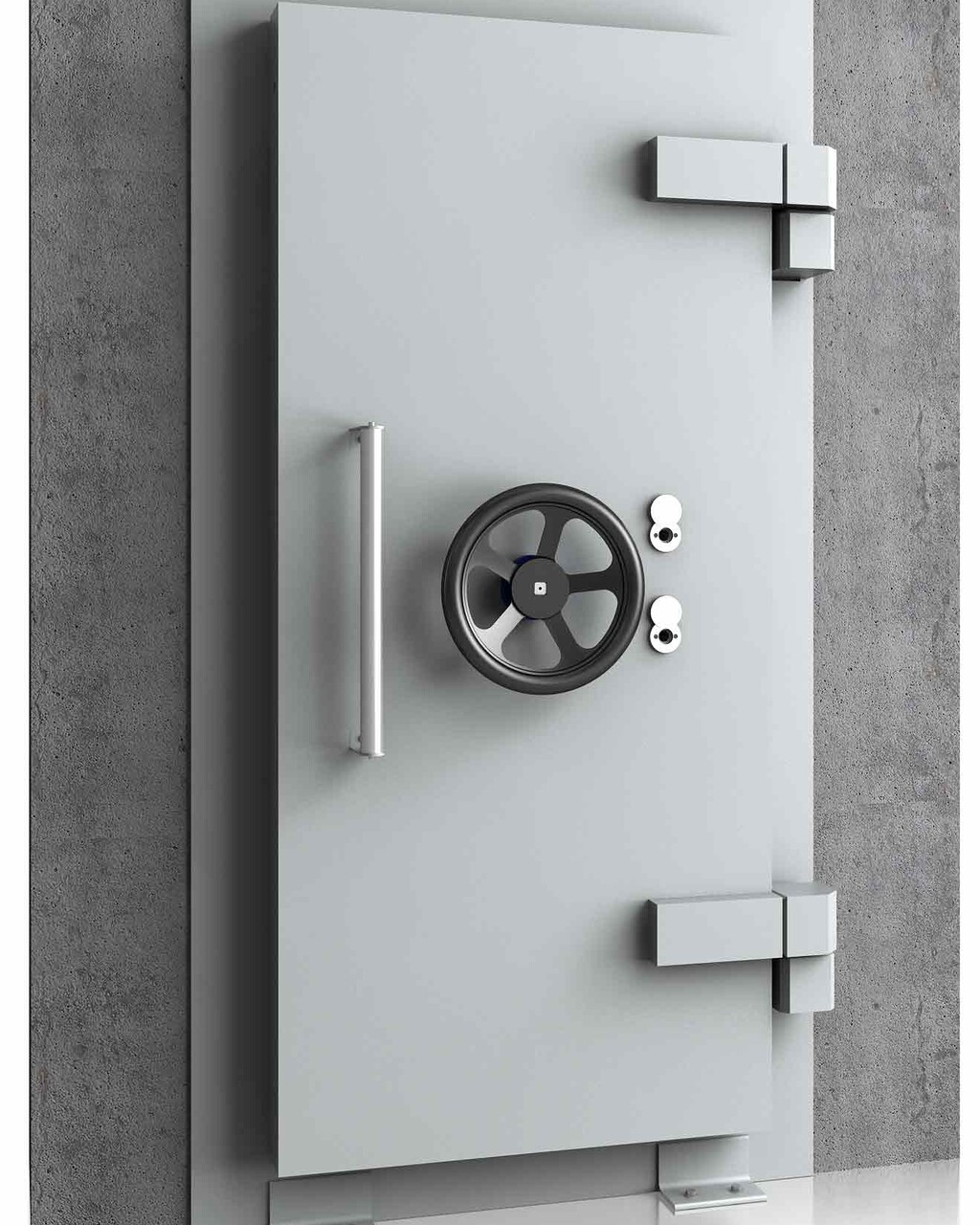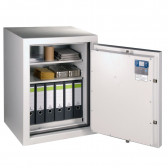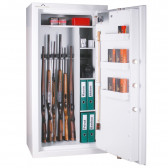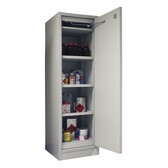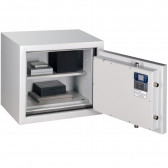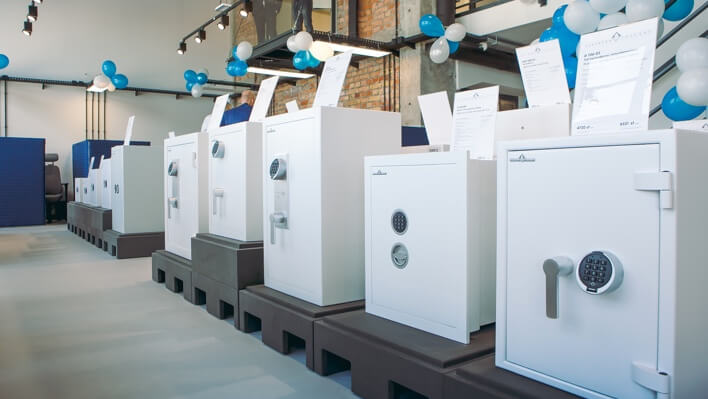Explosion-proof doors are a key element in weapons and ammunition storage facilities, providing protection against explosions and blasts. Armoured doors are specially designed to withstand detonations and protect both people and property inside. In this article, we will discuss the different types of explosion-proof doors, their advantages and disadvantages, and how to choose the right armoured door for your weapons storage facility.
Is your property really safe? About explosion-proof armored doors that change the rules of the game
Have you ever wondered what would happen if your business or home, shelter, or weapons and ammunition storage facility (ECM) were at the epicentre of an explosion? Do you think a regular door is enough to protect your most valuable possessions? Think again. An explosion is not just a shock wave, it is also the force and duration of the blast impulse, shrapnel, debris, and extreme temperatures. It is a scenario where every second and every detail of security counts.
That is why explosion-proof armoured doors, designed as high-resistance elements, are an investment that can save not only valuable defensive resources, but also, and perhaps most importantly, lives and property. Used in various facilities, such as military institutions and industrial buildings, they are crucial in minimizing the effects of explosions. They are not just a piece of equipment, but a safety policy in a world full of unpredictable threats.
What is a HTDP explosion-proof armoured door?
HTDP explosion-proof armoured doors are specialized structures designed to protect against the effects of explosions and terrorist attacks. Manufactured by Hartmann Tresore Polska, these sliding gates are designed to protect rooms or parts of buildings, including shelters, where people take refuge or valuable items, documents, weapons, and ammunition are stored.
The HTDP 01 and HTDP 02 models have a heavy steel frame (200x200mm), insulated with PIR panels and coated with corrosion-resistant paint and RAL 6020 (dark green) varnish. The HTDP 03 model is made of high-performance steel and reinforced concrete. All models are designed to operate under pressure reflected from the gate surface. The explosion resistance levels used are 7 bar (0.7 MPa, 101.5 psi), 21 bar (2.1 MPa; 305 psi) to 41 bar (4.1 MPa, 594.7 psi). These models meet defence standards and are NATO-compliant.
Key features and advantages:
- ● durable construction: use of high-quality structural steel (S235JRG2, S355J2G4), galvanized steel sheet and stainless steel,
- ● thermal insulation: PIR panels provide thermal insulation, which is important in the event of fire,
- ● corrosion resistance: primer and top coat in RAL 6020 protect against corrosion,
- ● compliance with standards: HTDP doors comply with AASTP-1 (Manual of NATO Safety Guidelines for the Storage of Military Ammunition and Explosives) and ISO 16933 standard.
How does the explosion-proof armoured door work?
Explosion-proof armoured doors work by absorbing and dispersing the energy of an explosion. Their structure is designed to withstand extreme pressure and temperature, minimizing damage inside the protected area.
Protective mechanisms:
Shock wave absorption: the doors are made of materials that absorb the energy of the shock wave, reducing its force
- Protection against debris: the design prevents debris and rubble from entering the interior, protecting people and property.
- Sealing: special seals protect against smoke and gas ingress.
- Temperature resistance: the materials used in the construction of the doors are resistant to high temperatures, which prevents the spread of fire.
- Modernization: the introduction of modern solutions as part of the modernization process increases the effectiveness of door protection, enhancing the safety of the crew.
- Operation after an explosion: a very important feature of Hartmann Tresore explosion-proof armoured doors is that they remain fully operational after an explosion – the personnel and equipment they protect can get out and take action in accordance with established procedures.
Lightweight explosion-proof doors
In addition to explosion-proof doors for military use, there are also civil standards for explosion-proof doors. These are simple and lightweight structures designed to protect people and property from the effects of small explosions, used in civil facilities. These doors differ in terms of their construction, materials and level of protection.
- EXR1 class blast-resistant doors: these doors are ideal for use in weapons storage facilities and laboratories where hazardous substances are present. Made of high-strength materials, they can withstand explosion pressures of up to 1.5 bar. Thanks to their lightweight construction, these doors effectively protect against accidental explosions of hazardous materials, minimizing the risk of damage and ensuring the basic safety of stored materials.
- EXR2 class explosion-proof doors: designed for weapons storage facilities and chemical plants, these doors offer slightly higher explosion resistance, withstanding pressures of up to 2.5 bar. The use of advanced construction materials ensures enhanced strength and protection against corrosion and other external factors.
- EXR3 class explosion-proof doors: these doors are designed to provide protection in areas with an even higher risk of explosion, such as weapons storage facilities and laboratories. Thanks to the use of the highest strength materials, these doors can withstand explosion pressures of up to 3.5 bar, providing light protection against the effects of explosions.
- EXR4 explosion-proof doors: ideal for chemical plants and weapons storage facilities, EXR4 doors offer protection against explosions with a pressure of up to 4.5 bar. Their design, based on the latest technologies, ensures not only strength but also resistance to toxic fumes and other hazardous substances.
- EXR5 class explosion-proof doors: EXR5 class doors offer the highest level of protection used in civil institutions, withstanding explosion pressures of up to 5.5 bar. Designed for applications such as weapons storage facilities and laboratories, these doors provide moderate protection against the effects of explosions, protecting both people and property.
All of the above-mentioned types of explosion-proof doors are designed to protect civilian facilities from accidental explosions of hazardous substances stored in warehouses and laboratories. They are made of low-strength materials. They are capable of withstanding the pressure of an explosion with a very short duration of the blast pulse and protecting people and property from the effects of minor explosions. However, they do not protect against acts of terrorism and should not be used in strategic facilities vulnerable to such actions. Under no circumstances should this type of door be used in military facilities, weapons and ammunition depots, including ECM (Earth Covered Magazine) depots, or in professional shelters. The defence standard and NATO standards do not allow the use of protection lower than 7 bar (0.7 MPa, 101.5 psi) with a sufficiently long blast pulse duration in such facilities.
Read also: Protection against terrorist threats – blast-proof armoured doors
Where should explosion-proof armoured doors be installed?
Explosion-proof armoured doors are ideal for use in areas where there is an increased risk of explosion or military or terrorist attack.
Examples of applications:
- ● ammunition and explosives storage facilities (ECM): They ensure the safety of stored materials and minimize the risk of explosion propagation.
- ● military and police facilities: They protect against attacks and sabotage.
- ● archives and vaults: They protect valuable documents and items from destruction.
- ● critical infrastructure: They protect data centres, power stations and other strategic facilities.
- ● public buildings: They increase safety in offices, hospitals and schools.
- ● Earth Covered Magazines (ECM): Explosion-proof doors in ECMs play a key role in protecting against the effects of explosions, limiting the spread of explosions and securing the contents of the magazine.
Versatile application: Explosion-proof and armoured doors are used not only to protect against explosions, but also against fires and harmful gases, which is important in industry, healthcare and critical infrastructure.
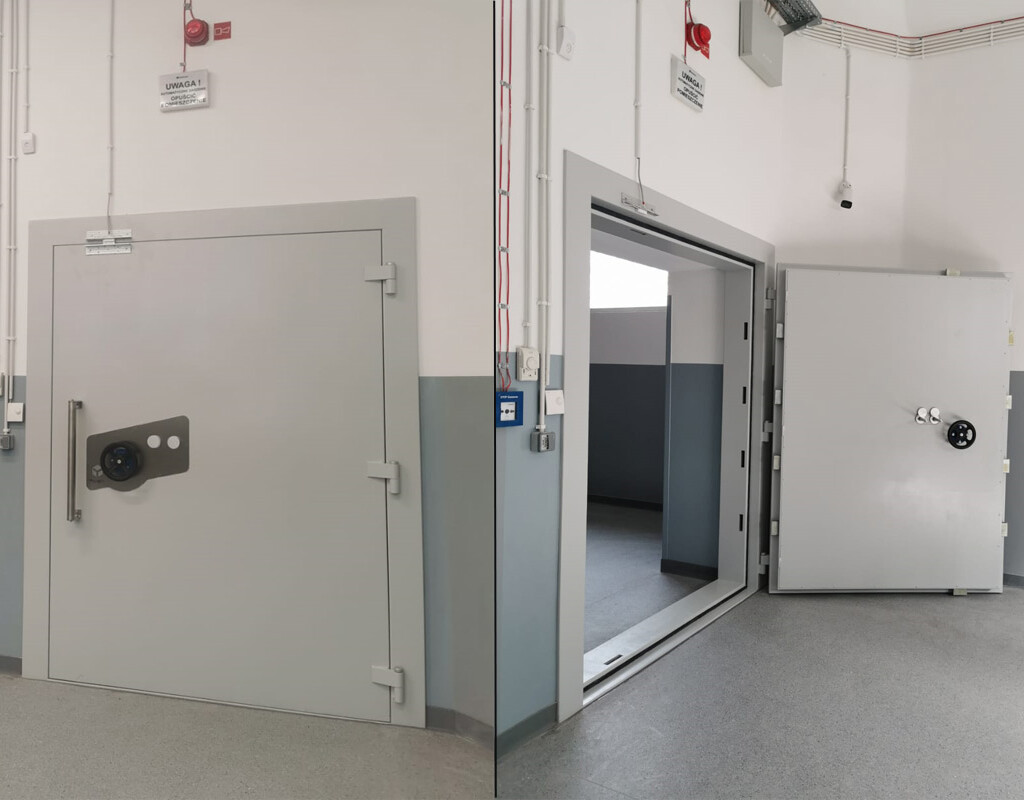
Safe storage of ammunition and explosives in accordance with NO-13-A247
NO-13-A247 is a Polish defence standard that regulates the storage of ammunition and explosives in above-ground warehouses. It specifies the minimum safe distances (QD) between the storage site for explosives (PES) and endangered facilities (ES). Storage facility doors are designed to meet specific burglary resistance standards, which increases the effectiveness of protecting stored resources.
Key definitions:
- - NEQ (Net Explosive Quantity) – the net mass of explosives contained in ammunition, expressed in kilograms,
- - QD (Qualified Distance) – the minimum safe distance between PES and ES,
- - PES (Protected Exposition Site) – a place where explosives are stored,
- - ES (Exposed Site) – a facility at risk, exposed to the effects of an explosion,
- - embankments – protective features that minimize the effects of a possible explosion.
How does the NO-13-A247 standard affect the selection of blast-resistant doors?
The NO-13-A247 standard specifies protection levels depending on the subclass of explosives, NEQ and the type of exposed facility (ES). The selection of blast-resistant doors must take these requirements into account to ensure an adequate level of safety.
Why choose explosion-proof doors from Hartmann Tresore Polska?
Hartmann Tresore Polska is a leading manufacturer of safes, vaults and property security solutions. Our explosion-proof armoured doors guarantee the highest quality, reliability and effectiveness.
What sets us apart?
- – experience: over 100 years of experience in the security industry,
- – innovation: the use of advanced analysis methods (FEM) to design resistant structures,
- – certifications: compliance with STANAG, ISO and NO standards,
- – individual approach: tailoring solutions to specific customer needs,
- – comprehensive service: design, production, installation and servicing.
Our explosion-proof armoured doors already protect civilian and military facilities in Poland. Watch the video and see how real explosion-proof doors are installed.
HARTMANN TRESORE explosion-proof doors
Don't wait for a disaster – protect yourself today!
Remember that safety is not a cost, it is an investment. Explosion-proof armoured doors are an element that can determine the survival of your warehouse, shelter or company in extreme situations. In practical terms, their durability and effectiveness depend on the operating conditions, so it is worth considering all possible circumstances when choosing them.
Contact us today to learn more about our products and receive a personalised quote. We will provide you with comprehensive support at every stage – from design and production to installation and service.
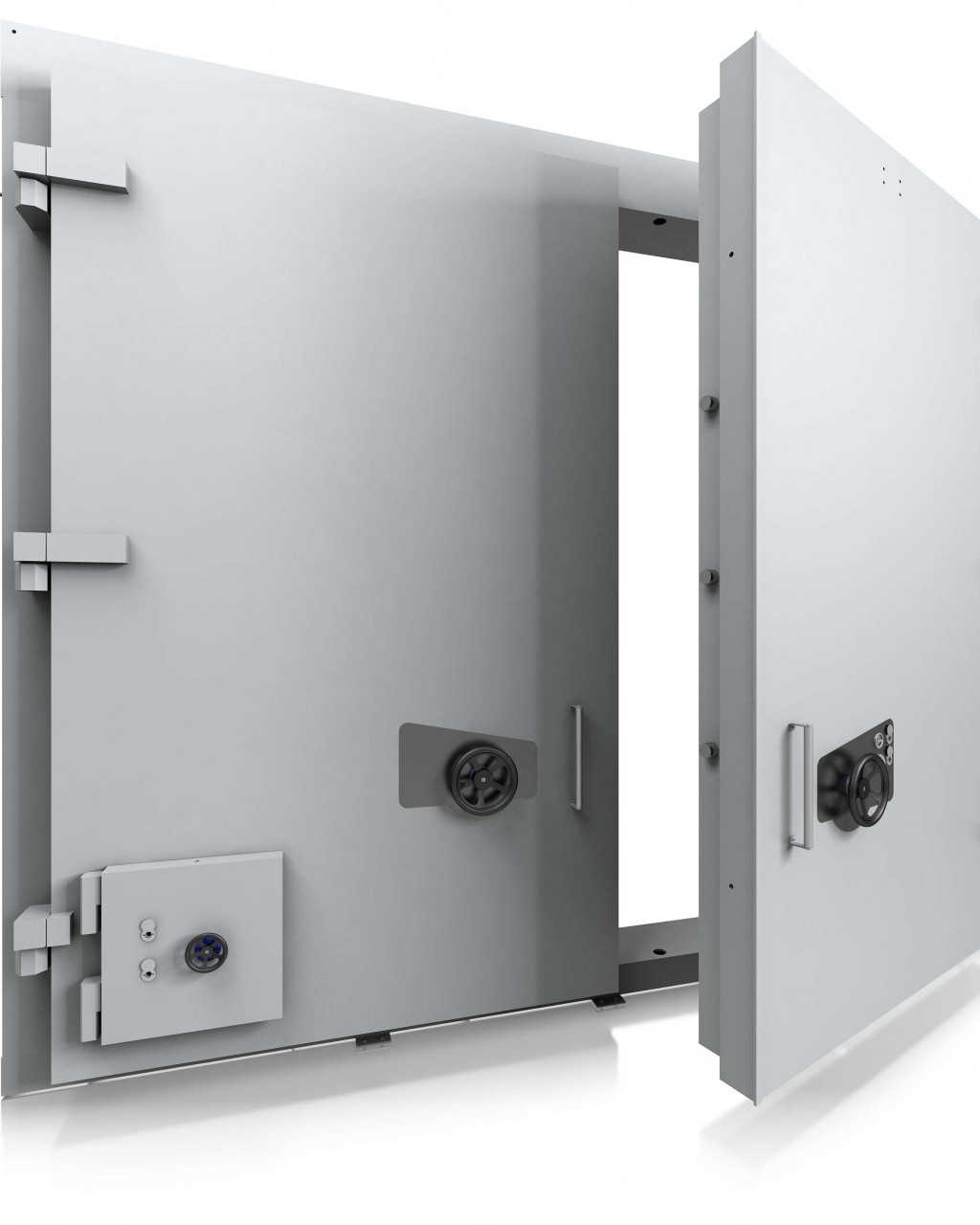
FAQ – Frequently asked questions
1. What are HTDP explosion-proof armoured doors?
HTDP explosion-proof armoured doors are specialised structures manufactured by Hartmann Tresore Polska, designed to protect against the effects of explosions and terrorist attacks.
2. Where should explosion-proof armoured doors be installed?
Explosion-proof armoured doors are ideal for use in ammunition depots, military facilities, archives, critical infrastructure and public buildings (shelters).
3. How does the NO-13-A247 standard affect the choice of explosion-proof doors?
The NO-13-A247 standard specifies protection levels depending on the subclass of explosives, NEQ and the type of facility at risk (ES), which affects the choice of appropriate explosion-proof doors.
4. Why choose an explosion-proof door from Hartmann Tresore Polska?
Hartmann Tresore Polska is a leader in the security industry, offering innovative, certified and customised solutions with over 55 years of experience.
5. What are the key features of HTDP explosion-proof armoured doors?
Robust construction, thermal insulation, corrosion resistance and compliance with NATO and ISO standards are the key features of HTDP doors.
You may be interested in: Vault doors/armoured doors. An optimal investment?
